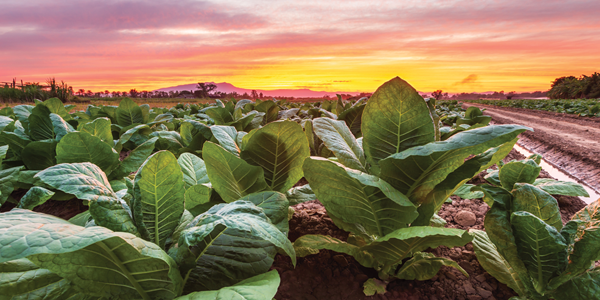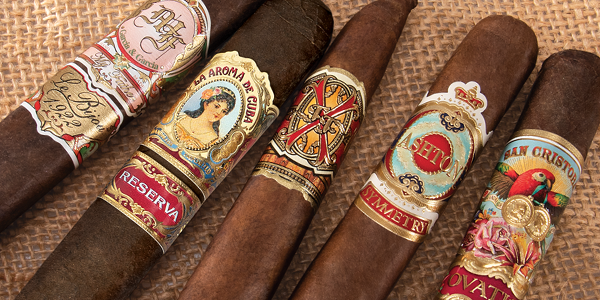Cigar Body vs. Strength
When we describe a cigar, the first things we talk about are its country of origin, blend, size, flavor profile, and its strength and body. To characterize a cigar’s strength and body, we assign the terms, mild, medium, and strong. Because strength and body are often interchanged, they can provoke confusion, but there are subtle and important differences between the two.
What Does Strength Mean in a Cigar?
The strength of a cigar exclusively refers to its nicotine content. Because premium cigars are handmade entirely from whole-leaf tobaccos, their nicotine content is not measured in a laboratory setting like cigarettes, which are made from chopped-up homogenized tobaccos along with hundreds of other chemicals and additives, besides nicotine.
Nicotine and the Tobacco Plant
The tobaccos that go into a premium cigar are drawn from different primings, or sections of leaves, on a tobacco plant. The three main sections of a tobacco plant from the top to the bottom are Ligero, Seco, and Volado. The leaves at the top receive the most sunlight and are therefore higher in nicotine. With added sunlight, these leaves also absorb a greater amount of nutrients.
Potent cigars like Fuente Fuente Opus X, My Father Le Bijou 1922, La Flor Dominicana Double Ligero, and Oliva Serie V are loaded with strong, nicotine-dense tobaccos. Because a cigar is strong, don’t think that it can’t also be smooth. It’s common for newer cigar lovers to assume strength and bitterness or harshness go hand in hand. That couldn’t be further from the truth. Cigars are bitter or harsh because the tobaccos haven’t been fully fermented or aged, which results in an offensive and unbalanced flavor profile. Strength has nothing to do with unpleasant taste.
Even seasoned cigar smokers can be caught off guard by a strong blend when it delivers an especially smooth taste. For example, because the tobaccos in San Cristobal Ovation have been aged for an extra-long period of time, the cigar delivers rich but creamy and refined tasting notes that may not seem as strong as what they actually are – until you stand up. The blend is full in both body and strength.
What Does Body Mean in a Cigar?
Because the tobaccos in a premium cigar with the most nicotine also tend to carry the most flavor, it’s easy to see how strength and body are intertwined. Body, however, is more a reflection of depth and fullness in a cigar. Cigars with denser, more resonant taste and aroma will be fuller in body.
Wine, Beer, & Whiskey Can Be Mild or Full-Bodied
One way to illustrate body is to consider how body differs in other things we consumer like beer, wine, and whiskey. Taking a swig of a crisp lager like Bud Light is a stark contrast from a creamy gulp of a Belgian-style ale like Chimay Grande Reserve. Bud Light goes down with a bright effervescence which quickly dissipates on the palate. With Chimay, a mouthful of dark grains and caramel resonates on the taste buds in a full-bodied finish.
Full-bodied red wines like cabernet and merlot display more aggressive tannins than the lighter and more approachable taste attributed to pinot noir, for example. Dense, peaty and full-bodied scotches like Laphroaig and Talisker are more polarizing than the rich but silky taste of Bunnahabhain 12-Year. Whiskey and cigars go best together when they complement one another, and one does not overpower the other.
Ashton Classic vs. Ashton VSG
Ashton Classic is a mild cigar that is also light in body. Elegant flavors of cedar, almonds, and coffee with cream emerge in a nutty, approachable finish. Ashton Classic is ideal for an afternoon on the golf course or for the cigar lover who is new to cigars. By comparison, Ashton VSG is strong and full-bodied. The premium aged blend layers the palate with a substantial profile of leather, earth, wood, and authentic Dominican spices. It’s an excellent cigar to pair a vintage top-shelf whiskey after an epicurean meal. The smoky and seductive taste and aroma of Ashton VSG lingers in a ravishing conclusion.









